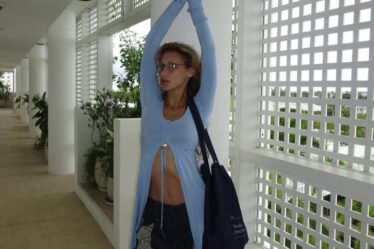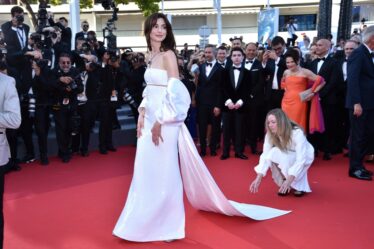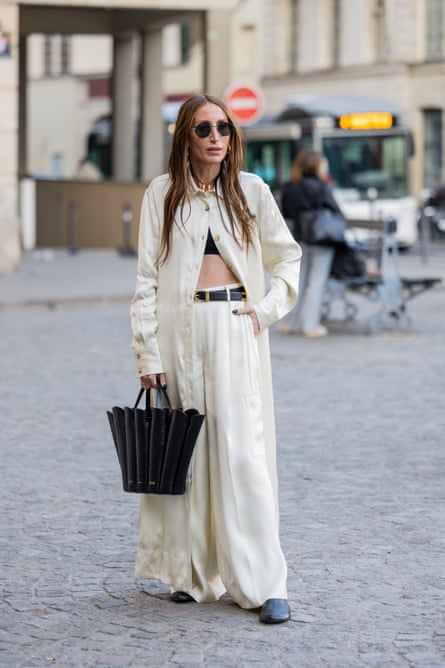
Finding a good pair of trousers can transform the rest of your wardrobe. The right pair can be versatile enough to be worn for weekend and office outfits, can be mixed and matched with different looks, and be comfortable enough for days when you’d rather not leave the house.
A good pair of trousers should be able to forgive fluctuations in your weight and water retention over the course of a month. They should accentuate the length of your legs, create a smooth line through the hip and sit neatly around the waist.
But most of the time, finding trousers that do exactly that can be a challenge. Here, experts provide advice on how to find that perfect pair.
First impressions count
“There is a general polish and refinement to a well-made pant,” says Charlotte Hicks, of Esse Studios. “If they look a little rough around the edges and don’t look sharp you can usually tell … Are they puckering? Twisting? [Do they have] strange folds or ‘whiskers’ on the crotch?”
Max Thomas Sanderson, a tailor who teaches fashion design at Parson Paris, suggests holding up the trousers in front of you to check their fall – a well-made pair should fall straight through the leg “If the garment has been cut poorly (off grain), or sewn hurriedly, it may cause twisting in the leg [seams] which is uncomfortable.”
Take a look inside
Once you’ve clocked your initial impressions, take a closer look. “In terms of construction, sometimes it’s easiest to look on the inside,” says Richard Jarman, of Commas. “You can quickly see the quality of the waistband, how the seams are finished, the hardware, and of course the lining.”
Sanderson suggests examining the stitching for accuracy and size – smaller stitches are more durable – as well as more “thought-through finishes” like a half-lining (where the trousers are lined from the waist to above the knee), seams that are finished with bias-binding (rather than overlocking), and a “silk saddle”: “An additional section of lining fabric that lies over the seam around the crotch that will help it to be more durable.”
Sanderson also says to check for how much extra fabric is in the centre back seam. Well-made trousers should have “a generous seam allowance” he says, “so they can be altered to your size at the waist.”
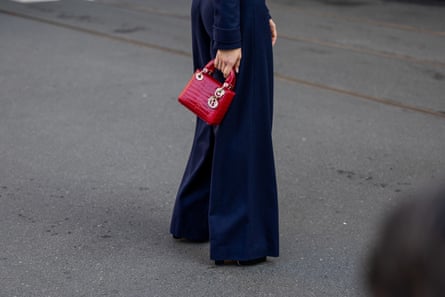
Consider the fabric
The ideal material for trousers depends on when and where you’ll wear them. If you’re looking for pants to wear frequently while you’re working or moving around a lot, you need something hardy that can withstand a lot of friction. “Denim, gabardine or drill in cotton are highly durable and good for workwear or everyday wear,” says Sanderson, whereas “synthetic fabrics don’t breathe and may be uncomfortable in sensitive areas of the body”.
Wool also makes beautiful trousers, says Hicks. “Nothing is quite as luscious, falls so effortlessly and is as durable for this lifetime and the next.” This is in part due to wool’s complex molecular structure that makes it elastic, breathable, and soft on the skin. Sanderson says because of this, creases will fall out naturally which makes wool trousers good for travel.

Try them on
There are many variables in each of our bodies that can affect the fit of a pair of pants: waist-to-hip ratio, the size of your glutes, the leg length, and the rise, just to start. So it’s important to try before you buy.
Hicks says: “The shape on your body, even your pelvis and your stance directly affects the fall through the leg so find a shape that works for you, with you and not against you.”
Pay attention to the depth of the rise at the front and the back. “You need enough room to be comfortable without having too much fabric hanging low,” says Sanderson. “I would again think about how they feel when you are moving, squatting, sitting etcetera. Standing in a changing room doesn’t always allow you to really feel how they fit when in realistic use.”
“Don’t convince yourself that all is well if you know they are too tight in the waist, leg or rise.”
A note on the relationship between the rise and the leg length
While exposed ankles and buckled trouser legs come in and out of fashion, as do high waisted pants and hipster rises, if you want your legs to look as long as possible, pay attention to the way your trousers flow from the waist to the hem.
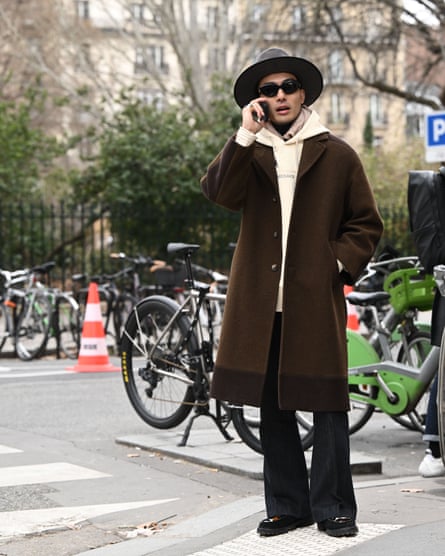
The depth of the rise (the distance between the middle of the crotch seam and the waistband) will create the illusion of where your waistline sits, Jarman says. Rather than letting trends dictate this, figure out what is flattering for your body. If you’ve got naturally long legs, you might opt for lower rise trousers, while shorter-legged folks might prefer a higher cut: “If you get this right, it will balance proportions beautifully,” Jarman says.
However deep the rise, the trousers should fall smoothly over the hips and legs, without crinkles or buckles, so the fabric falls in one long line to sit on the top of the shoe “with a slight fold in the fabric at the front” where the trousers hit the shoe.
Picking pockets
Generally speaking, if a designer has taken the time to add pockets it’s a sign they are considering how the wearer will use the garment. “Pockets are generally designed for ease,” says Hicks. “They have been designed with the wearer in mind.”
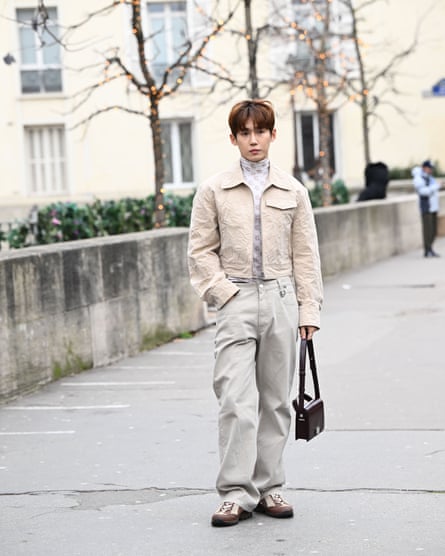
Sanderson says to test the pockets by putting your hands in them to see if they are deep enough to comfortably rest your hand or store something. If you frequently carry your phone or wallet in your pockets, see how the trousers look with these items in the pockets before you buy them – if they ruin the line, you’ll wear the pants less. “Shallow pocket bags are often cut small simply to save money on fabric,” Sanderson says.
If the pockets stick out or pull open like a little pair of ears, this usually means the seat is too tight. Sizing up, or getting the back seam taken out by a tailor can help, but if this happens with most pairs of pants, it likely means you have a higher-than-typical seat and should seek out trousers with slanted or top pockets instead, or get a pair custom-made.
Finally, check the pocket fabric, Sanderson advises. “Good trousers will use a sturdier cotton fabric even if the body is lined in viscose or silk.”

